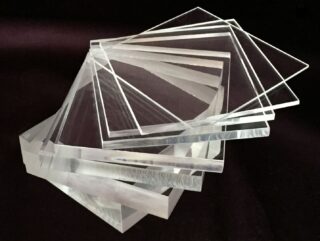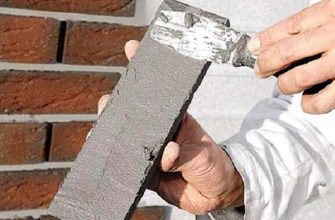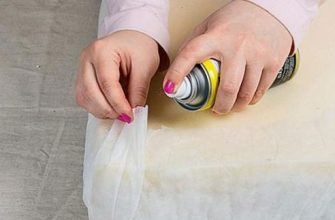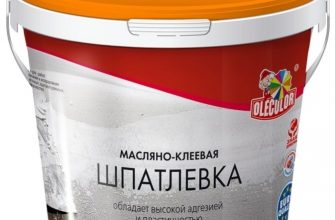In the construction of gazebos, outbuildings, verandas, greenhouses and greenhouses, transparent walls and a roof are often preferred. The material for such structures can be monolithic polycarbonate or organic glass. To make a choice, you need to understand in detail the composition, properties, pros and cons of each material, to understand the difference between them.
Organic glass

Plexiglass is made by mixing oxygen, carbon and hydrogen to form a thermoplastic resin. Subsequently, the raw material is subjected to extrusion or injection molding. After that, the products are cut into pieces of a given format and sent to consumers.
Plexiglass has the following properties:
- ecological purity - 100%;
- transparency - 92%;
- density 1200 kg / m³;
- impact strength - 2.8 kg / m² (10 times higher than that of silicate glass);
- softening point - 102 ºС;
- temperature range - from -20 ºС to +85 ºС;
- complete tightness.
The disadvantages of acrylic include its flammability, softness, fragility and limited operating temperature range. Such a property as softening upon heating can be considered in two ways - on the one hand, it is instability, and on the other, plasticity.
The industry produces slabs with a format of 205 × 305 cm and a thickness of 2 mm to 20 mm. Slabs up to 40 cm thick with a surface area of up to 500 m² can be made to order.
The scope of application of plexiglass is quite extensive and affects almost all areas of industry and everyday life.

The most popular areas of its use:
- trade - souvenirs, counters, showcases, advertising boxes;
- medicine - optics, artificial lenses;
- aquatic world - aquariums and walls for large reservoirs;
- public places - signs, partitions, fences;
- construction - windows, arches, domes, steps;
- transport - windshields, portholes;
- tourism - hulls of yachts, boats, boats, jet skis;
- household appliances - bathtubs, pallets, sinks, countertops.
Distinguish between transparent colored, matte plastic with a glossy and corrugated surface.
Monolithic polycarbonate

Polycarbonate has appeared in everyday life relatively recently, but has gained incredible popularity due to its unique qualities. Polymer plastic is produced by chemical reaction between bisphenol A and phosgene COCl2. The process has been worked out to the smallest detail, adjusted, which has a positive effect on the quality and cost of the final product.
Karboplast has the following technical characteristics
- ecological purity - 100%;
- transparency - 88%;
- density - 1300 kg / m³;
- impact strength - 30 kg / m² (200 times higher than that of silicate glass);
- softening point - 145 ºС;
- temperature range - from -100 ºС to +125 ºС;
- complete tightness.
The disadvantages of the polymer include its high cost and high coefficient of thermal expansion. A property such as haze in the sun is eliminated by adding special additives.
The industry produces slabs with a size of 105 × 205 cm and a thickness of 2 mm to 20 mm. Slabs up to 5 cm thick with a surface area of up to 100 m² can be made to order. In retail, you can find panels with a mirror surface and a bulletproof design.

The scope of the polymer is quite extensive:
- army - sights, binoculars, goggles, periscopes;
- medicine - flasks, test tubes and other shatterproof vessels;
- trade - anti-vandal coating for signs, protection of valuable products;
- architecture - domes, roofs, stained-glass windows, panoramic windows, fences and flights of stairs;
- transport - headlights, searchlights, windows on all types of vehicles;
- catering - dishes, cutlery, restaurant furniture, flowerpots;
- high technologies - hard drives for computer equipment;
- agriculture - greenhouses, livestock complexes with a transparent roof.
The main difference between materials, in addition to composition, lies in the strength index. Polycarbonate plastic is at least 10 times stronger than acrylic. If guarantees against destruction are needed, polycarbonate is used. In places with a moderate load, inexpensive acrylic is sufficient.
Comparison of polycarbonate and plexiglass
To better understand what is the difference between polycarbonate and plexiglass, you should familiarize yourself with the table, which sets out the main criteria and the corresponding material indicators.
| Indicator | Organic glass | Polycarbonate |
| Transparency | 92%. Throughout the service, it gradually changes color to yellow with a decrease in transmittance to 85-88%. | 88%. Ordinary plastic becomes cloudy, gradually becoming dull. The addition of additives eliminates this property. |
| Strength | Limited. When bent and hit, the sheets burst, splitting into pieces with sharp fragments. Bonding with wire stitching is possible. | When the stability limit is exceeded, the plates crack, but retain their integrity due to the viscous structure of the polymer. Cosmetic repair is possible with subsequent replacement. |
| Abrasion resistant. | It is easily scratched, becomes cloudy and loses transparency from the impact of hard objects. Thanks to its softness, it can be restored to its original smoothness by polishing. | The surface is firm and firm. Almost impossible to scratch. Turbidity occurs after prolonged use of harsh cleaning materials. Elimination of defects is carried out by grinding and applying a putty. |
| Chemical resistance | Impervious to non-abrasive household detergents, food products, salts and alkalis. Decomposes on contact with acids and acetone solvents. | Chemically inert. Does not react to any existing fluids regardless of their composition. It can be used in all branches of industry. |
| Flexibility | Limited to 1%. Excess leads to breakage and deterioration of the material. | Depending on the thickness of the sheet, it is 5-25%. The material can be used to create complex curved structures. |
| Operating temperature range | Limited. In severe frost it cracks, and in the heat it becomes soft, up to bending under its own weight. Not suitable for use in a dishwasher. | Wider. It tolerates cold without problems, losing some of its flexibility when it cools. Can be used in any heat, but also not dishwasher safe. |
| Lifetime | Within 50 years. Since the material is a product of organic chemistry, it changes composition over time, becomes cloudy and brittle, and begins to crumble. | Theoretically unlimited, currently no limit. The structure has strong crystalline bonds that are resistant to external factors. |
| Flammability | Supports combustion by emitting pungent smoke and strong odor. | It does not burn, but smolders. From the flame it turns into slag, also giving off thick and unhealthy smoke. |
Outwardly, it is almost impossible to distinguish both types of plastic from each other and from silicate glass. Good quality materials have high transparency, shiny surface, do not distort the image. Polymers will differ only during their practical tests, which no one will carry out in everyday life.








